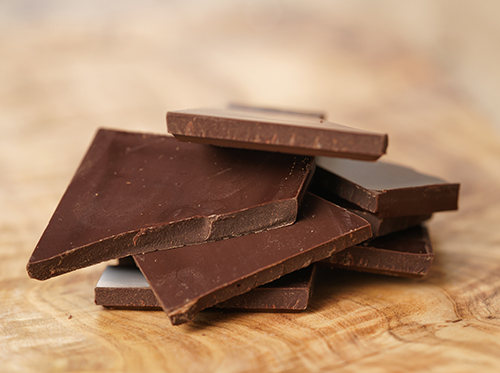Why is replacing missing teeth important?
February 19th, 2020

When we talk about teeth, every single one of yours counts. Whether you’ve lost a tooth due to injury or poor oral hygiene, it’s worth seeing Drs. Angela Paros, Amer Atassi, Eric Young, Alexander Katsnelson to evaluate all your replacement options. If you don’t, you could suffer negative effects to your teeth, gums, jawbones, appearance, and self-esteem.
Depending on how many teeth are missing and where they are located, Drs. Angela Paros, Amer Atassi, Eric Young, Alexander Katsnelson may suggest an implant, fixed bridge, or a removable bridge.
Addressing missing teeth as soon as possible is in your best interests. If you don't, the consequences might include:
- Shifting teeth: When you lose a tooth, the space it creates allows the neighboring teeth to drift and move out of alignment. A once-straight smile and correct bite can quickly turn into crooked teeth and a misaligned bite.
- Tooth decay and/or gum disease: After teeth have shifted, it can be harder to reach all areas around them to brush and floss properly. The buildup of bacteria and plaque can result in periodontal disease and the loss of your remaining teeth due to decay.
- Effect on jaws: Missing teeth alter your bite and how your teeth and jaws contact one another. This puts added strain on your jaw joint (TMJ) and can contribute to the development of TMJ disorder.
- Change in face and appearance: When you lose a tooth, your gums and your jawbone are no longer stimulated in that area. A dental implant replaces the root of a tooth or several teeth, and provides stimulation to prevent bone loss. If the root isn’t replaced, this can lead to deterioration of the jawbone and alteration of the shape and appearance of your face. Your face, especially the cheeks, can look older and more sunken.
Replacing missing teeth is an essential step for your physical and emotional health. If they are replaced in a timely manner at our Romeoville, IL office, you’ll continue to have the same wonderful smile you’ve always had.
Team Dark Chocolate
February 12th, 2020

Valentine’s Day is the holiday to celebrate all the treasured relationships in your life. It’s a time to honor love in all shapes and forms with cards, social gatherings, and sometimes even binge eating of sweets.
It's hard to look the other way when grocery stores and pharmacies are invaded with goodies connected to the Valentine’s Day theme, and especially if you’re on the receiving end of some of these sweets. We get it. In fact, we’re all for it!
However, we also support a cavity-free smile. So in the interest of your dental and general health, and because we think it’s genuinely tasty, Drs. Angela Paros, Amer Atassi, Eric Young, Alexander Katsnelson recommends an alternative to the Valentine treats you may be accustomed to: dark chocolate.
Yes, Healthy Chocolate Exists
Studies have shown that dark chocolate is high in flavonoids, an ingredient found in the cocoa beans used to make chocolate. Flavonoids can help protect the body against toxins, reduce blood pressure, and improve blood flow to the heart and brain.
By opting for dark chocolate rather than milk chocolate, you get to reap these benefits! Pretty sweet, right? Just make sure to stick to high-quality dark chocolates that have undergone minimal processing.
Dark Chocolate, AKA Protector of Teeth
Not only does dark chocolate provide some nice benefits for your overall health, it also helps protect your teeth against cavities! According to the Texas A&M Health Science Center, dark chocolate contains high amounts of tannins, another ingredient present in cocoa beans.
Tannins can actually help prevent cavities by interfering with the bacteria that causes them. Think of them as scarecrows for bacteria. They don’t always prevail, but isn’t it nice to have them there?
Smooth Never Sticky
Unlike many popular candies, dark chocolate is less likely to stick in the crevices of your teeth. Chewy, gooey sweets are more likely to hang around in your mouth for longer periods of time, which means they raise the odds of your harboring cavity-creating bacteria.
While some dark chocolates have additives like caramel or marshmallow, it’s best to opt for the plain varieties, which are just as delicious. If you’re feeling festive, though, a dark chocolate with caramel is still better than a milk chocolate with caramel, so that’s the way to go!
While dark chocolate has some pretty sweet benefits, the most important thing to remember (whether you go the dark chocolate route or not), is that moderation is key. That being said, we hope you have fun satisfying your sweet tooth and shopping for treats for your friends and loved ones. Happy Valentine’s Day from all of us at High Point Dental Group!
The Advantage of Invisalign Teen®
February 5th, 2020

Many teens want to improve their smile without the pain and embarrassment of having to wear metal braces. Just like metal braces, Invisalign works by gently moving teeth into position. Metal braces are worn continuously, however, and need to be adjusted by Drs. Angela Paros, Amer Atassi, Eric Young, Alexander Katsnelson regularly in order to move the teeth into proper position.
Invisalign uses a series of clear trays to move teeth into position. When you are done with one tray, simply pop in the next! Invisalign Teen straightens teeth just as well as traditional metal braces, but has several advantages.
Invisible
You’ve probably figured out the most obvious advantage already: the aligners are nearly invisible. Invisalign works by using a series of clear aligners that should be worn 20 to 22 hours a day. Invisalign trays are almost undetectable when you wear them, so you can smile with confidence — even while you are straightening your teeth.
Removable
One of the best things about Invisalign Teen is that the trays are removable. This means you can remove your tray to eat, brush, and floss your teeth, or even to play sports. While Drs. Angela Paros, Amer Atassi, Eric Young, Alexander Katsnelson and our team at High Point Dental Group require you to wear the trays for most of the day, having the ability to remove your straightening trays means you have practically none of the dietary restrictions that metal brace wearers have to observe.
Teens that play contact sports often experience difficulties with metal braces. Invisalign Teen allows the flexibility to wear a mouthguard, and no metal wires or brackets means less risk of cuts or other injuries while playing a game. Musicians also benefit from being able to remove their trays during rehearsals and performances. You can even remove your tray for your school photo or to snap a quick selfie!
Finally, because you can remove your aligners, you can easily keep your teeth clean through normal brushing and flossing. You can also clean your trays by brushing and rinsing them in warm water. Brushing and flossing with metal braces can be frustrating and time-consuming. Invisalign Teen treatment at High Point Dental Group helps you keep your smile white and shiny with very little change to your normal routine.
To learn more about Invisalign Teen, or to schedule an appointment with Drs. Angela Paros, Amer Atassi, Eric Young, Alexander Katsnelson, please give us a call at our convenient Romeoville, IL office!
Oral Health Concerns for Infants
January 29th, 2020

Because babies’ teeth don’t appear until around six to eight months of age, it’s a natural misconception that they don’t need dental care. But the steps you take as the parent of an infant can help your baby maintain good oral health and develop healthy dental habits in the future.
It’s easy to take care of a baby’s teeth and gums, especially when oral hygiene for your infant becomes part of the normal daily routine. Learn more about how you can promote good dental health for your baby with these tips and considerations.
Taking Care of Baby’s Oral Hygiene
- Dental Hygiene for Birth to Six Months. Cleaning your infant’s gums is as important as cleaning teeth will be later. Hold your baby in your arms, and with a clean, moistened washcloth wrapped around your index finger, gently massage his or her gums.
- Dental Hygiene for Six to 12 Months. After teeth begin to appear, it’s time to switch to a soft, children’s toothbrush for teeth cleaning. New research has shown that fluoride toothpaste is safe and recommended for use once your baby’s first tooth arrives. Gently brush your baby’s teeth after each feeding, in the morning, and before bedtime, just as you did before teeth appeared.
- Good Bedtime Habits. One of the most important things you can do to protect your infant from tooth decay is to avoid the habit of putting baby to bed with a bottle. Use other soothing bedtime activities, such as rocking and lullabies, to help your baby drift off to sleep.
- A Note about Dental Decay. Many people are unaware that dental decay is transmissible. Avoid placing your baby’s bottle, sippy cup, or pacifier in your own mouth to test the temperature. Likewise, don’t share utensils with your baby.
Partner With Your Dentist
Your baby should receive his or her first dental health checkup by the age of six months. Even though your infant may not have teeth yet, Drs. Angela Paros, Amer Atassi, Eric Young, Alexander Katsnelson can assess the risk your baby might face for oral diseases that affect hard or soft tissues. Drs. Angela Paros, Amer Atassi, Eric Young, Alexander Katsnelson can also provide you with instructions for infant oral hygiene, and explain what steps to add as your baby grows and develops.
High Point Dental Group is your partner for good oral health, and we’re here to make caring for your baby’s dental hygiene and health easier and more enjoyable for you.






